ROYAL TOTEM
The Chinese imperial totemic system, centered on elements such as dragons, phoenixes, auspicious clouds, and peonies, developed a unique symbolic language and cultural significance throughout history. The dragon, as the core symbol of imperial authority, embodies a composite form (incorporating deer antlers, eagle claws, fish scales, etc.) reflecting the cosmological concept of "the fusion of all creatures." Since the Han Dynasty, the five-clawed golden dragon became an exclusive emblem of the emperor. The depiction of dragon motifs on Lu Silk shop signs in the Along the River During the Qingming Festival scroll attests to its permeation into commercial and folk contexts.
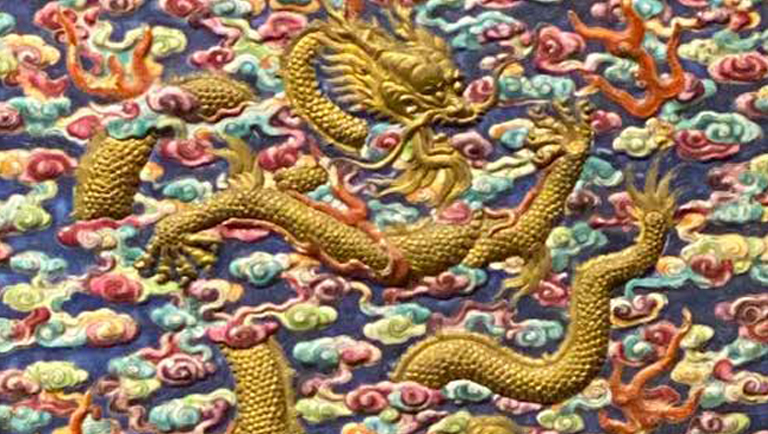
-

Since the Ming Dynasty, Lu silk has been a royal tribute, with over 50 Lu silk wedding quilts preserved in the Palace Museum today, attesting to its deep connection with imperial rituals. The use of royal totems such as dragons, phoenixes, and peonies has transformed these products into a contemporary continuation of "imperial-grade aesthetics." For instance, the specifications of Lu silk quilts exclusively used in Ming and Qing royal weddings are still replicated today. The craftsmanship of Lu silk involves 298 steps, taking 375 days to complete a single wedding quilt. Techniques like handcrafted gold-thread embroidery and the vibrant turquoise color palette inspired by Fahua porcelain translate these symbolic motifs into tangible cultural heritage. After being inscribed into the National Intangible Cultural Heritage list in 2014, it has further become a vehicle for the global dissemination of Eastern aesthetics.
-

Lu silk wedding quilts serve as carriers of the family teaching of "four generations under one roof" within marital traditions: the peacock and wisteria symbolize conjugal affection, plum and chrysanthemum blossoms represent harmony between generations, while peonies subtly convey the inheritance of filial piety, collectively forming an expression of family ethics that embodies the ideal of "one-bowl-soup distance." For high-end clientele, these quilts are both a tangible representation of family history and a certification of cultural lineage. Crafted from silk materials that meet the historical standard of "Songjiang in the south, Lu'an in the north" (each quilt requiring 5,250 silkworm cocoons), and adorned with classic imperial wedding motifs inspired by the Palace of Earthly Tranquility in the Forbidden City, the products possess both museum-grade collectible value and the attributes of modern luxury.
-
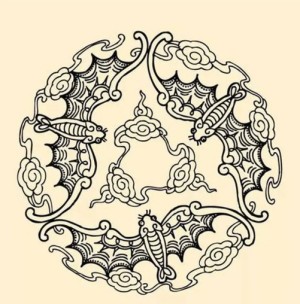
Phoenix
Symbolizing the empress's "maternal virtue encompassing the realm," the "Phoenix Weaving through Peonies" motif on Lu silk wedding quilts represents the harmony of yin and yang. In Chinese culture, it embodies beauty, auspiciousness, kindness, serenity, and virtue.
-
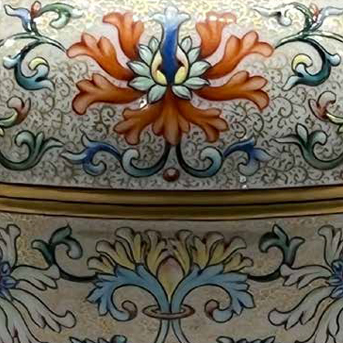
Interlocking Lotus Branches
Symbolizing "endless continuity," this motif frequently appears in imperial attire and architectural decorations. It represents the perpetuation and flourishing of life, embodying the philosophy of "ceaseless growth," and conveys profound hopes for a blessed future.
-
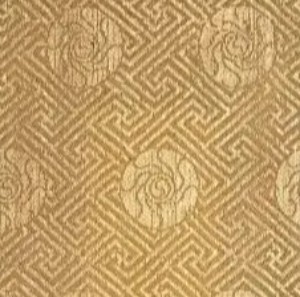
Peace Throughout the Four Seasons
This concept is symbolized through the imagery of seasonal flowers and a vase, representing peace and stability across the four seasons. As a cultural symbol, it reflects the reverence for natural cycles in ancient China's agrarian society and embodies the philosophical principle of "harmony between humanity and nature."
-
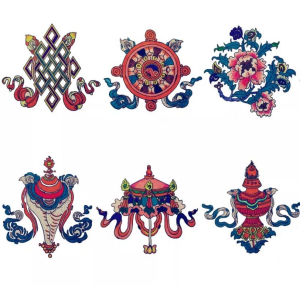
The Eight Auspicious Symbols
Also known as the Eight Auspicious Emblems or the Eight Buddhist Treasures, these symbols hold profound significance in Buddhist culture. They represent not only the core tenets of Buddhism but also embody blessings, good fortune, and auspiciousness.




